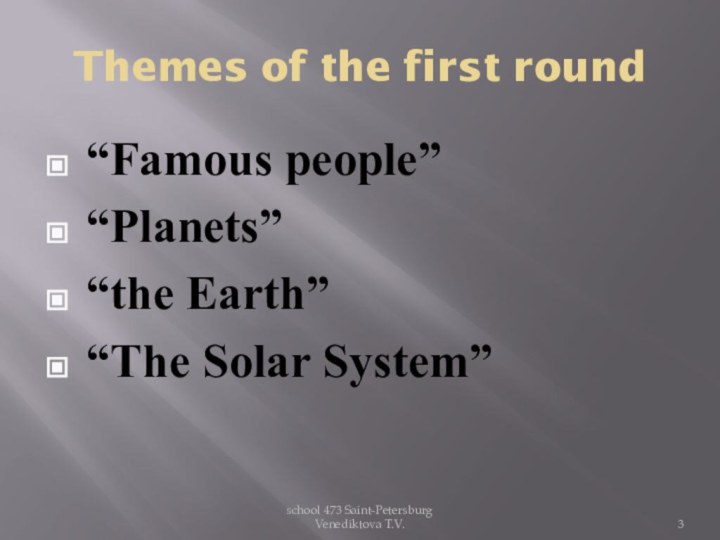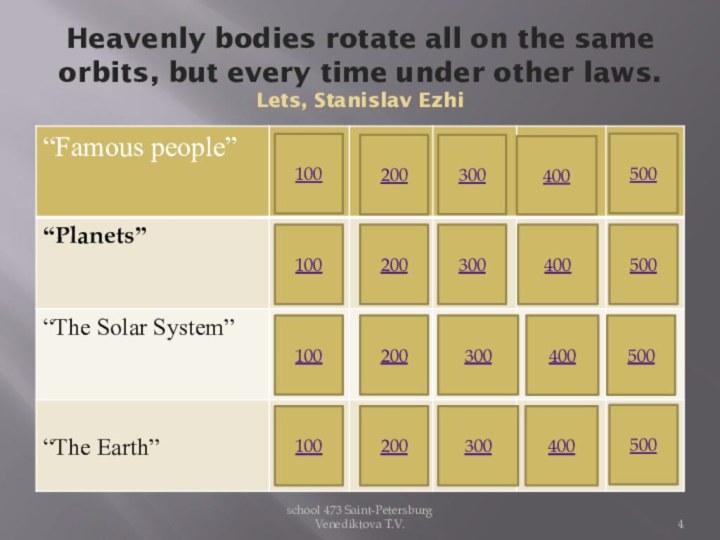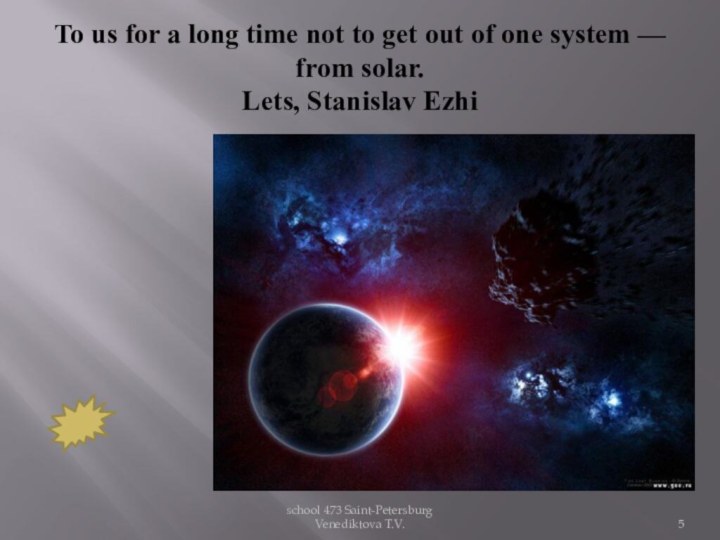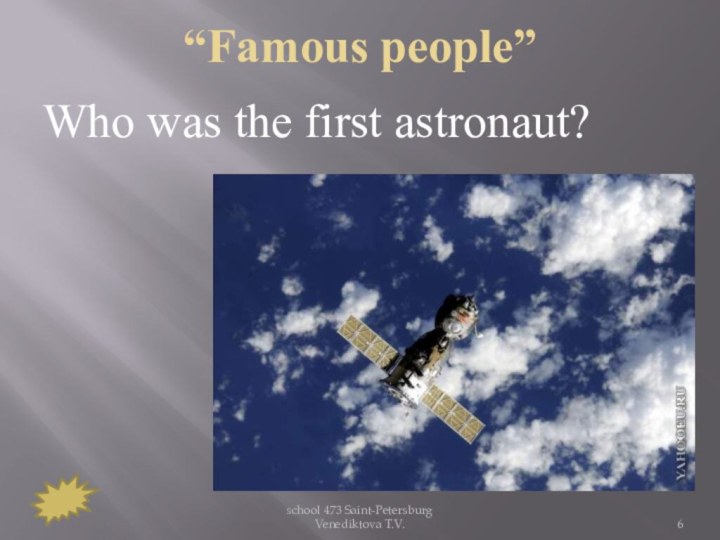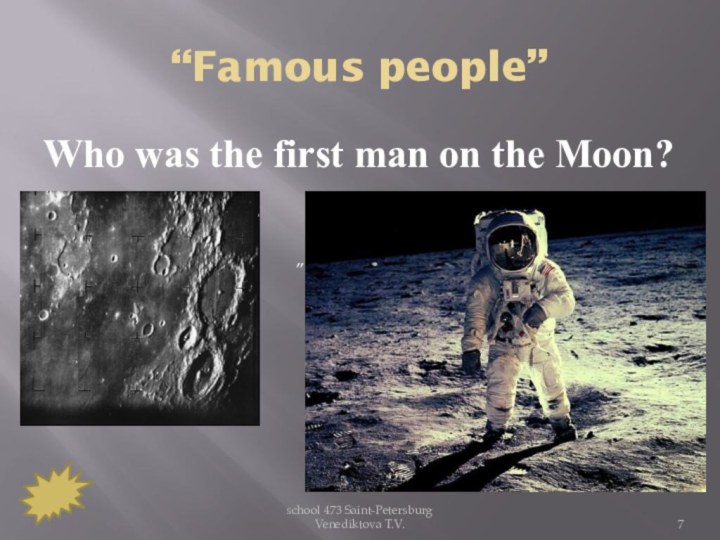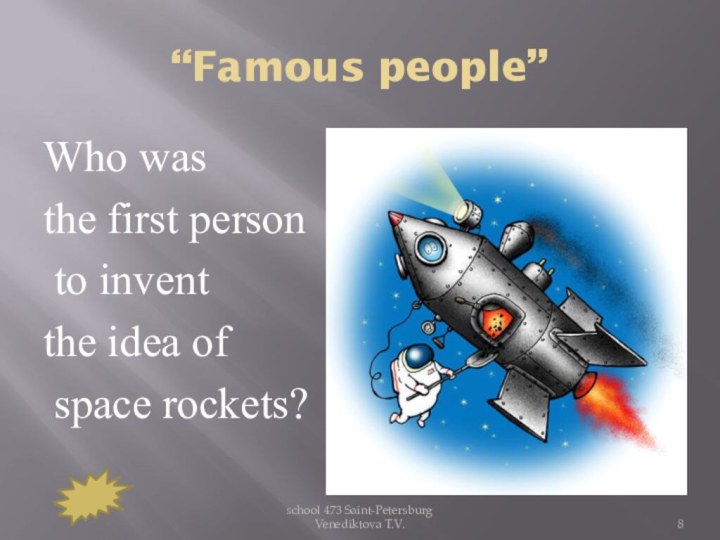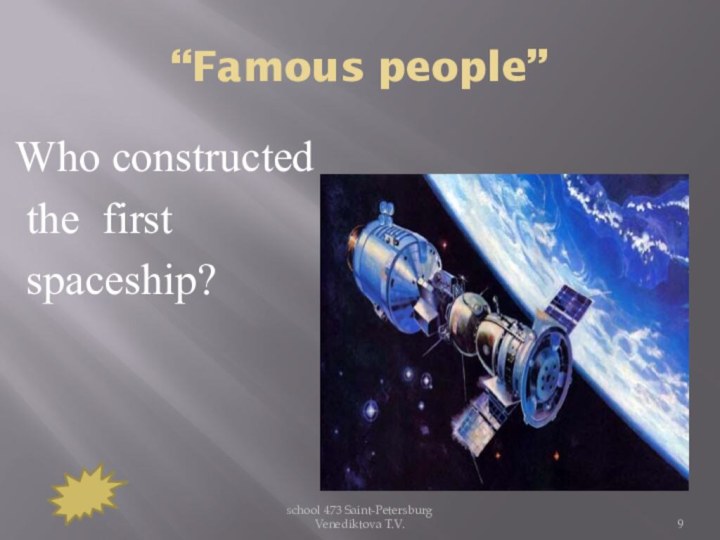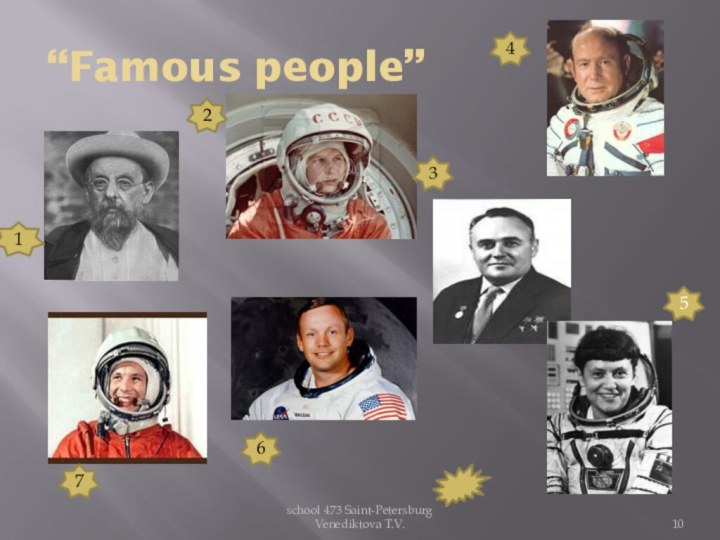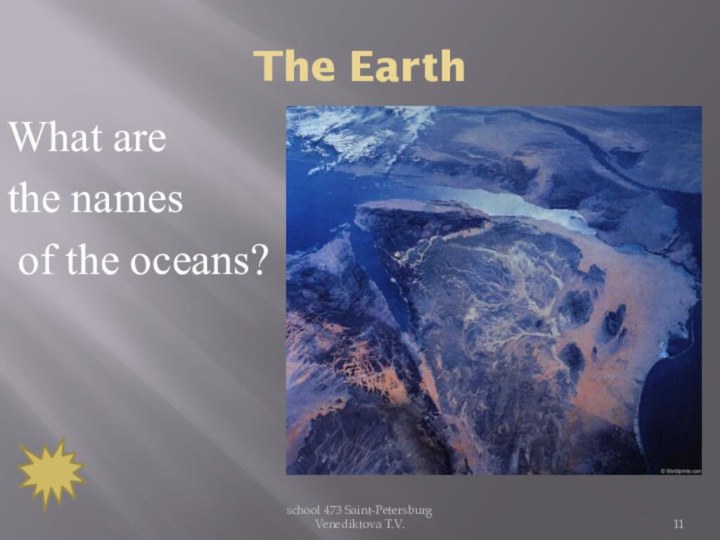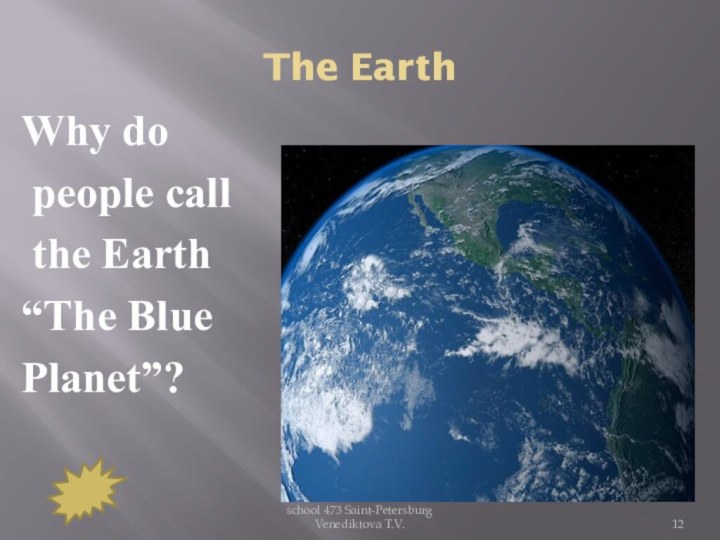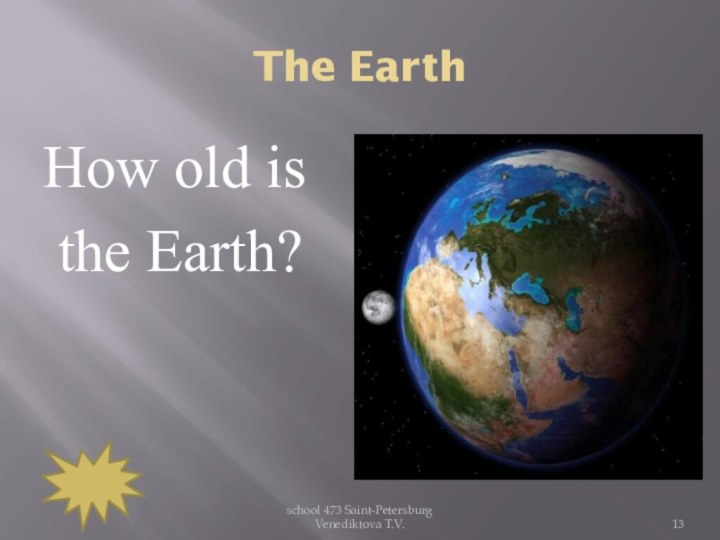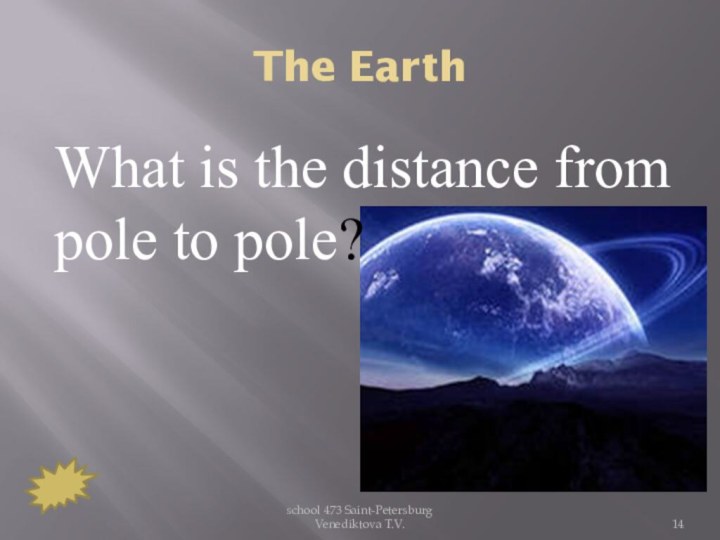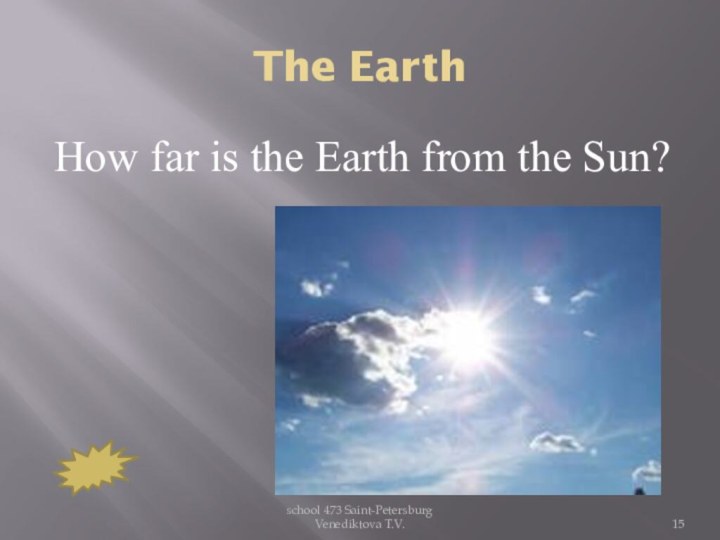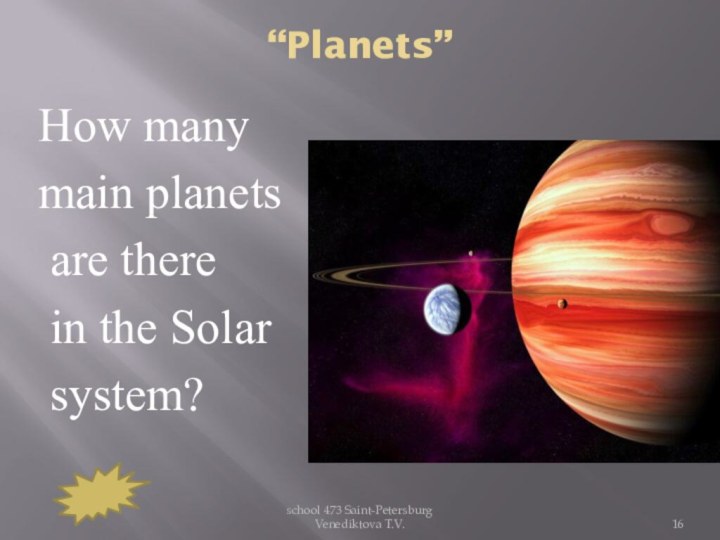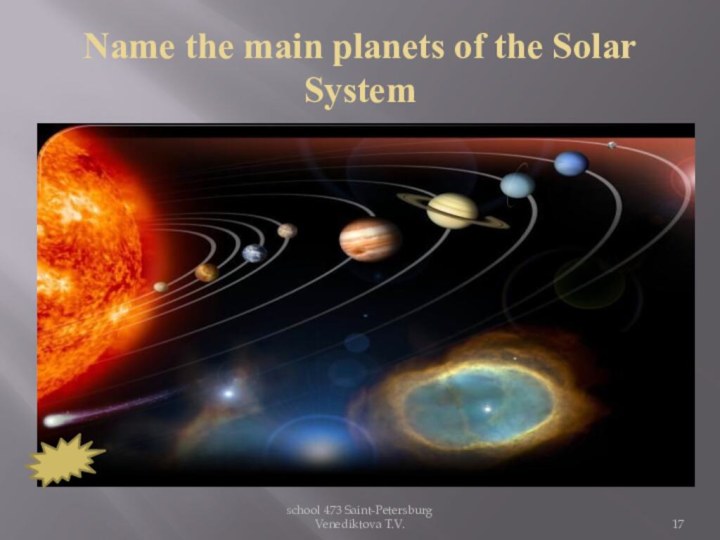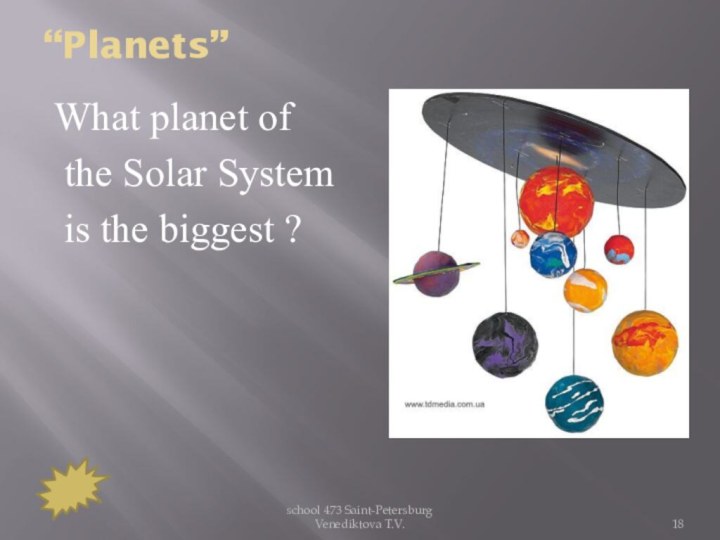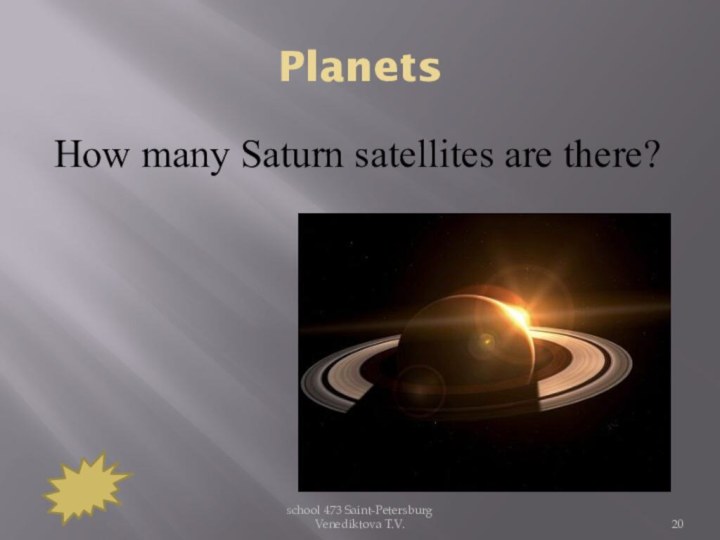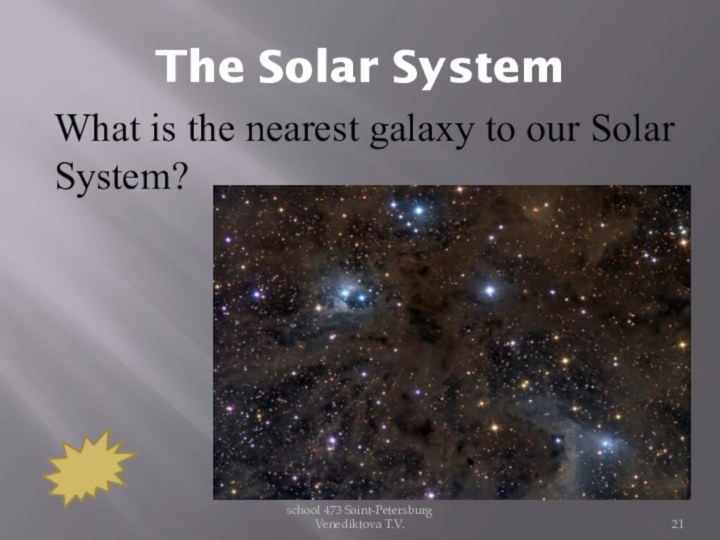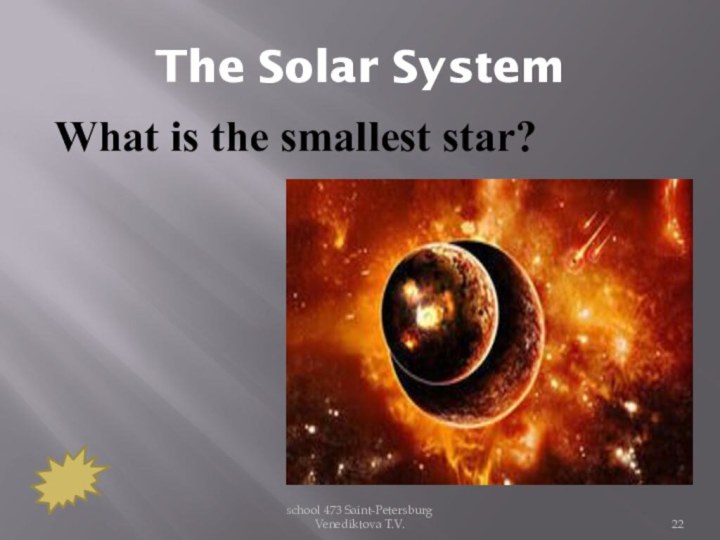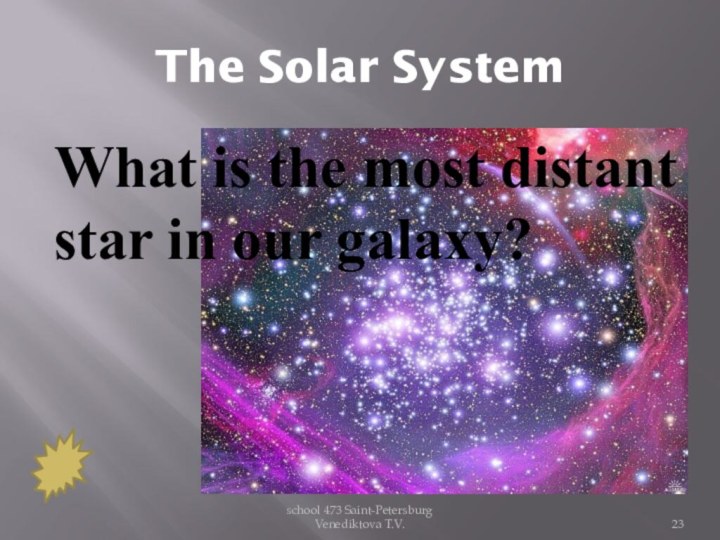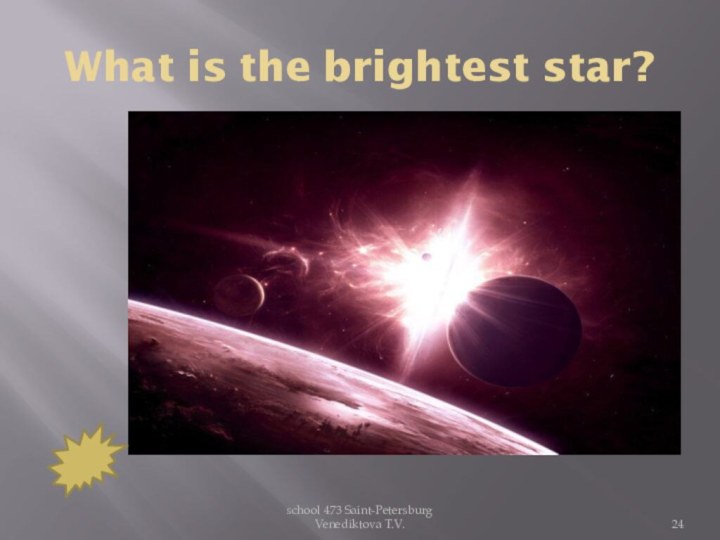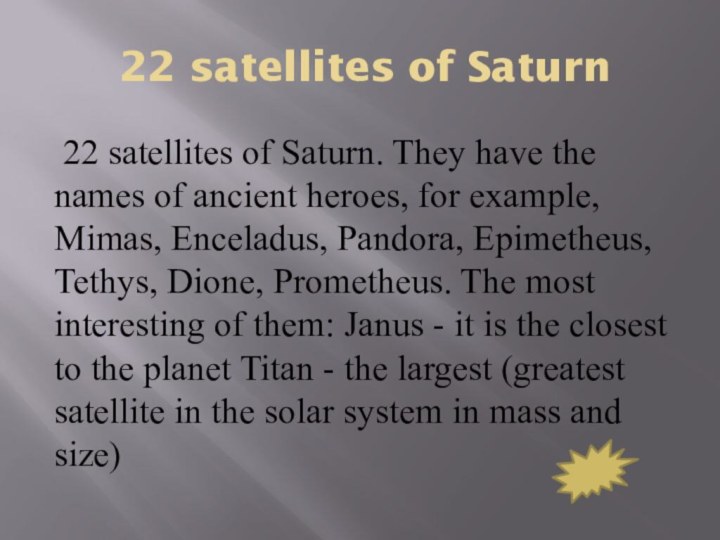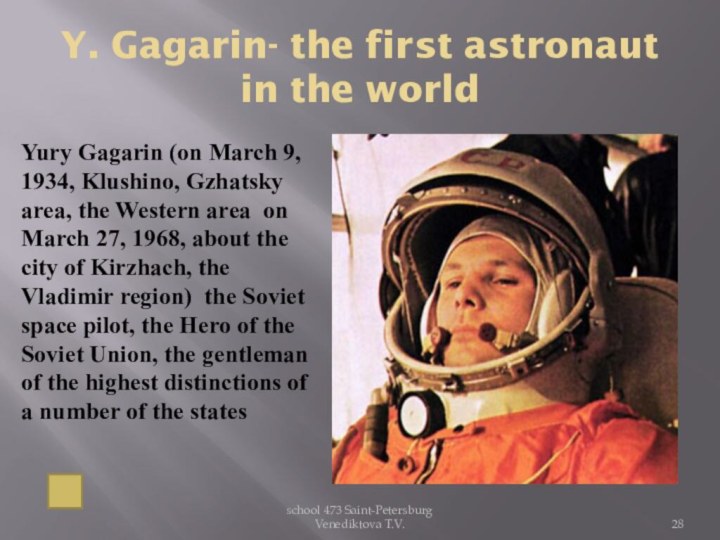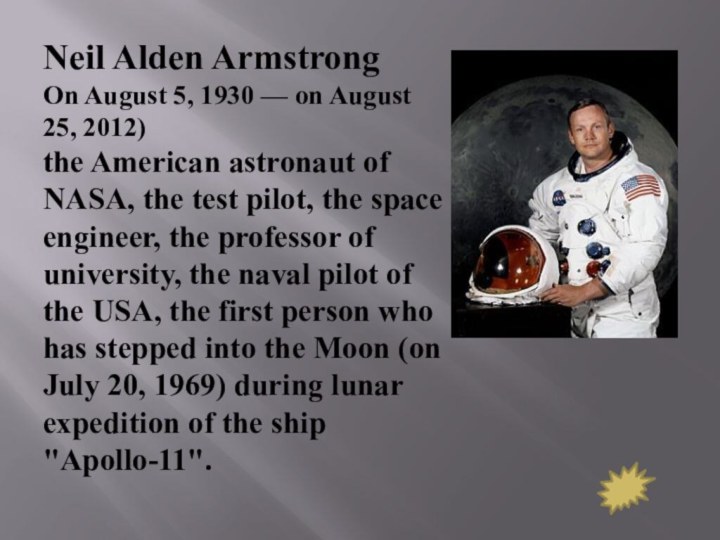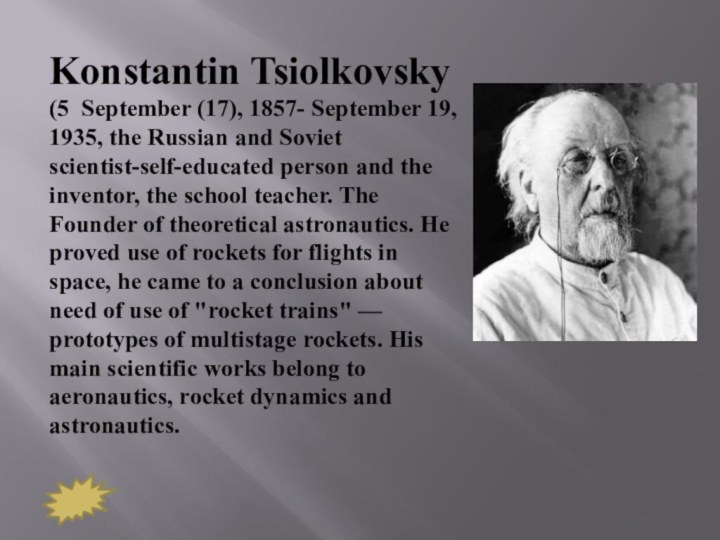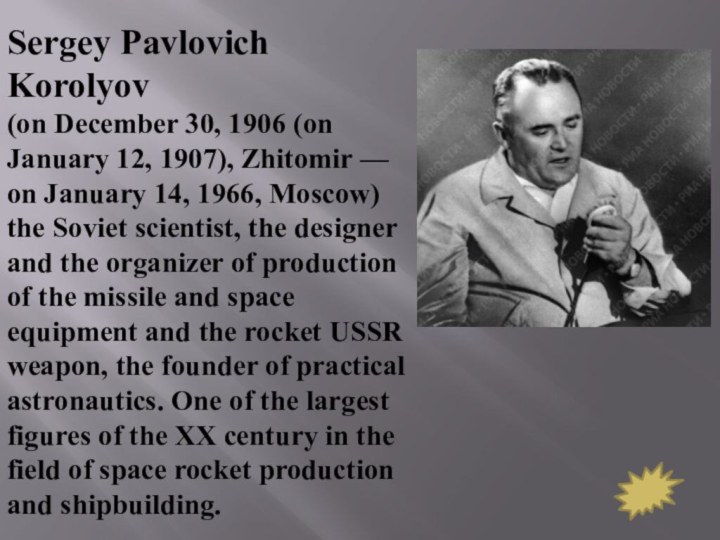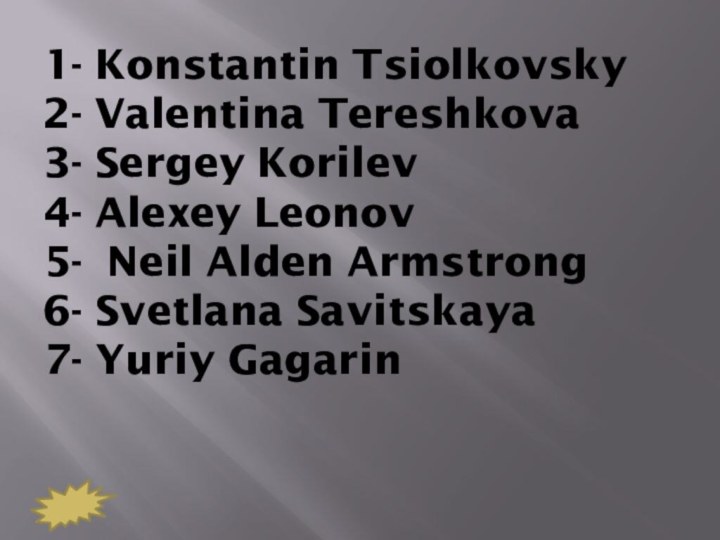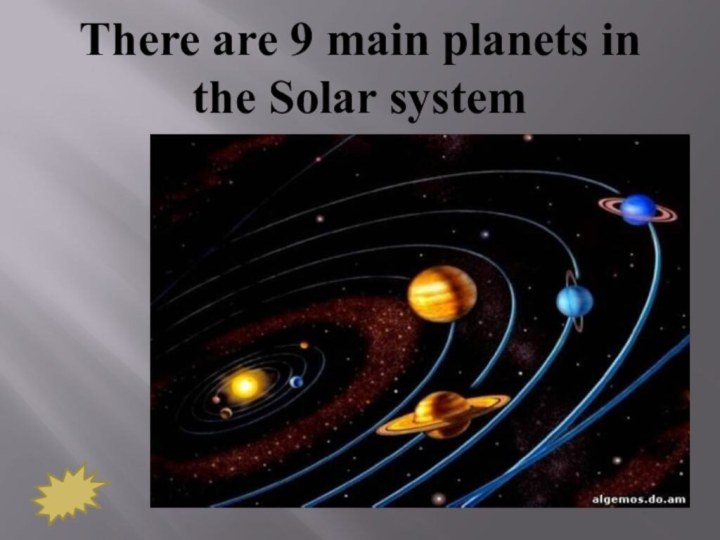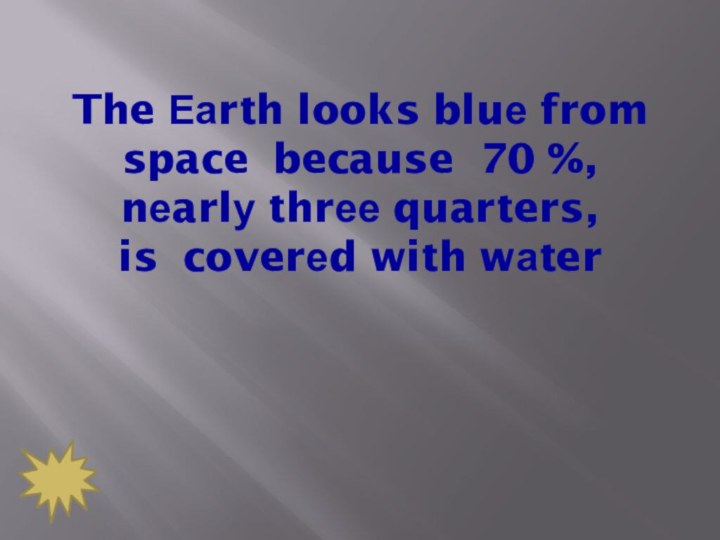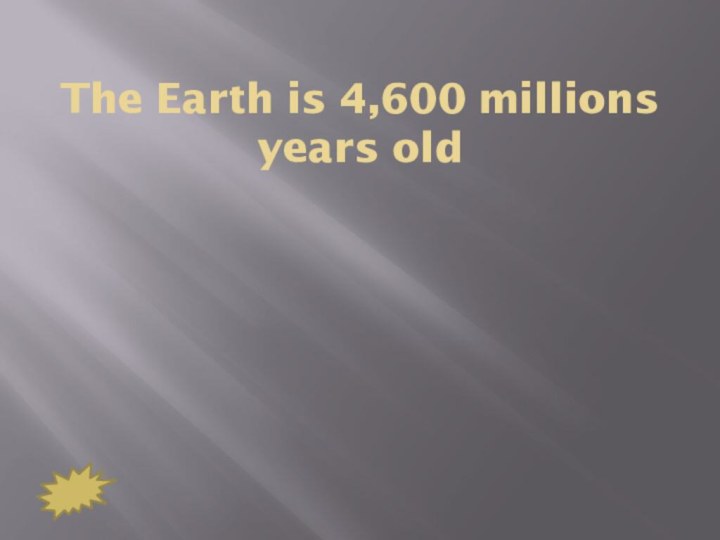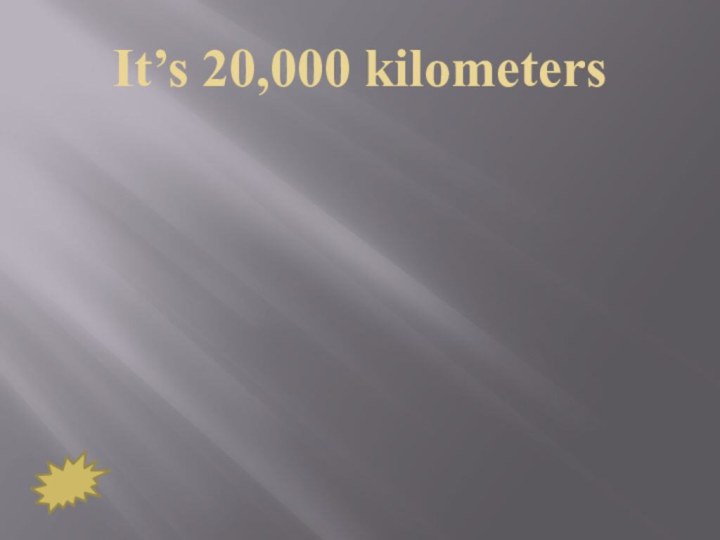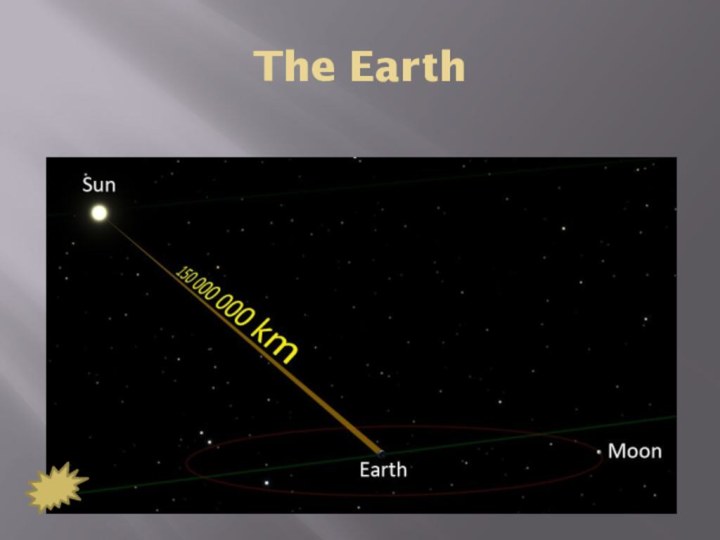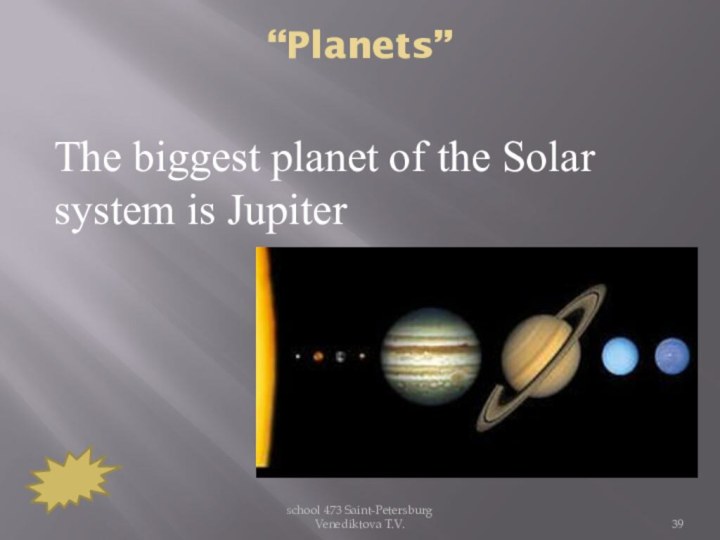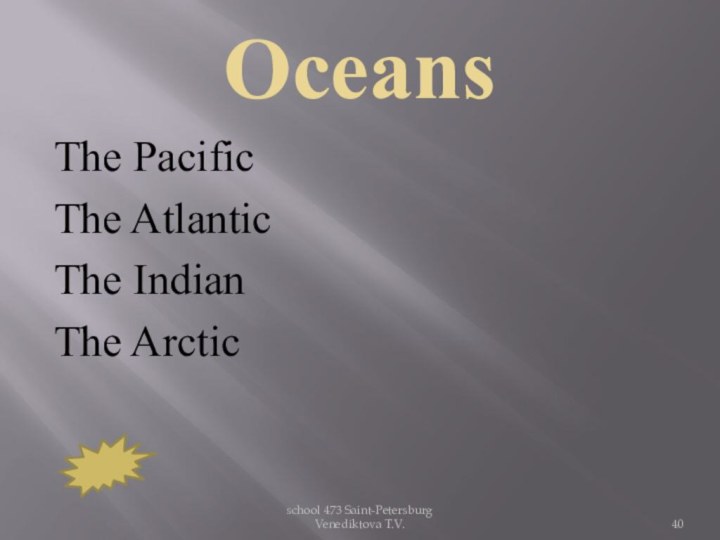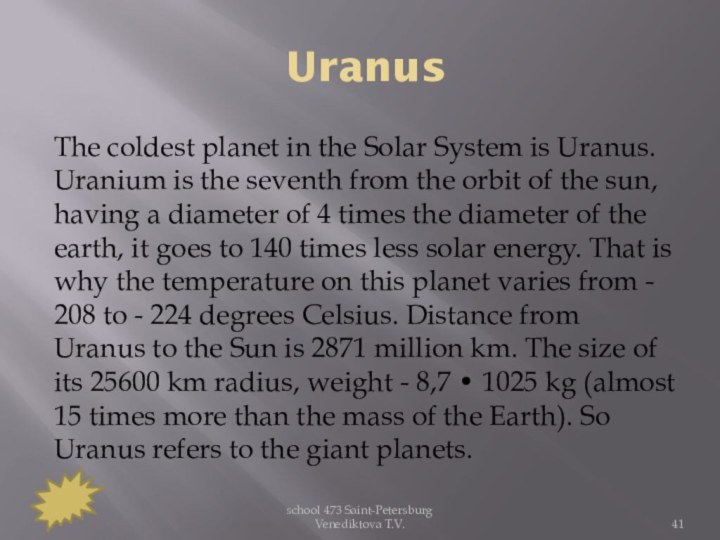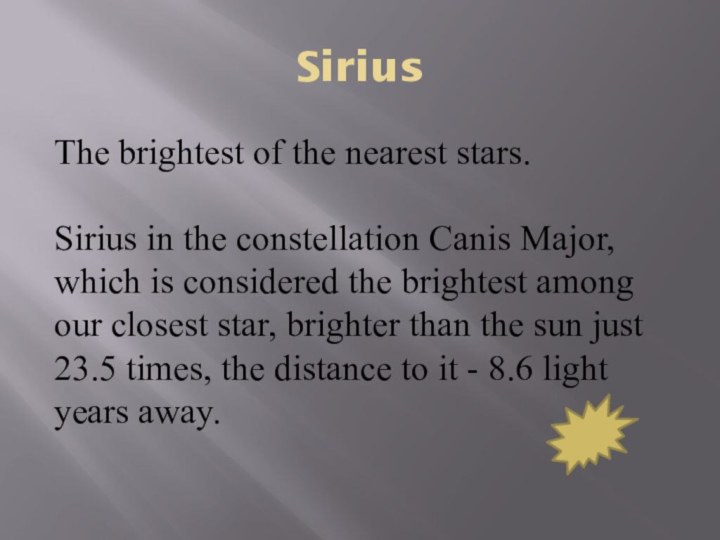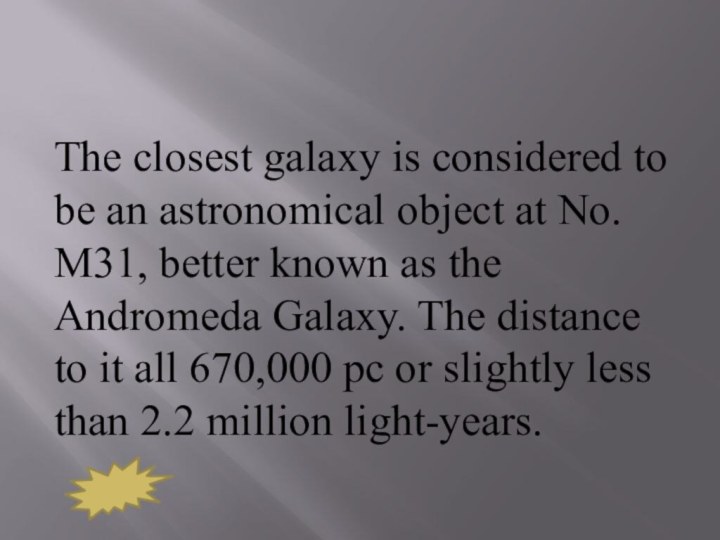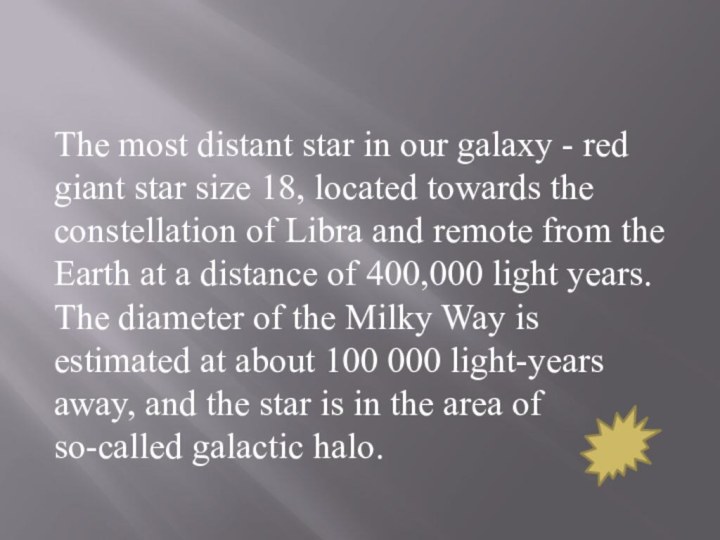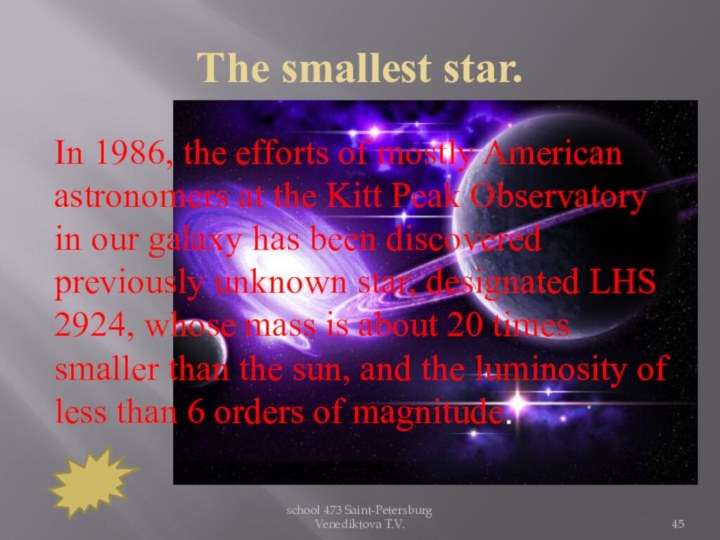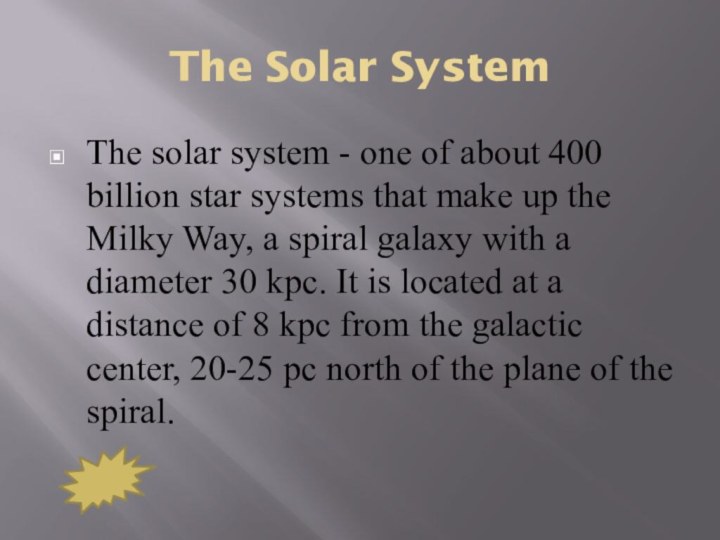Слайд 2
This space, same for everything existing, no god
and any person created, but always it was, is
and will be eternal... →
Efessky, Heraclitus
school 473 Saint-Petersburg Venediktova T.V.
Слайд 3
Themes of the first round
“Famous people”
“Planets”
“the Earth”
“The Solar
System”
school 473 Saint-Petersburg Venediktova T.V.
Слайд 4
Heavenly bodies rotate all on the same orbits,
but every time under other laws.
Lets, Stanislav Ezhi
school
473 Saint-Petersburg Venediktova T.V.
100
200
300
400
500
100
200
300
400
100
200
300
400
500
100
300
400
200
500
500
Слайд 5
To us for a long time not to
get out of one system — from solar.
Lets,
Stanislav Ezhi
school 473 Saint-Petersburg Venediktova T.V.
Слайд 6
“Famous people”
Who was the first astronaut?
school 473 Saint-Petersburg
Venediktova T.V.
Слайд 7
“Famous people”
Who was the first man on the
Moon?
school 473 Saint-Petersburg Venediktova T.V.
”
Слайд 8
“Famous people”
Who was
the first person
to invent
the idea of
space rockets?
school 473 Saint-Petersburg Venediktova
T.V.
Слайд 9
“Famous people”
Who constructed
the first
spaceship?
school 473 Saint-Petersburg
Venediktova T.V.
school 473 Saint-Petersburg Venediktova
T.V.
1
2
5
4
3
7
6
Слайд 11
The Earth
What are
the names
of the oceans?
school
473 Saint-Petersburg Venediktova T.V.
Слайд 12
The Earth
Why do
people call
the Earth
“The
Blue
Planet”?
school 473 Saint-Petersburg Venediktova T.V.
Слайд 13
The Earth
How old is
the Earth?
school 473 Saint-Petersburg
Venediktova T.V.
Слайд 14
The Earth
school 473 Saint-Petersburg Venediktova T.V.
What is
the distance from pole to pole?
Слайд 15
The Earth
How far is the Earth from the
Sun?
school 473 Saint-Petersburg Venediktova T.V.
Слайд 16
“Planets”
How many
main planets
are there
in the
Solar
system?
school 473 Saint-Petersburg Venediktova T.V.
Слайд 17
Name the main planets of the Solar System
school
473 Saint-Petersburg Venediktova T.V.
Слайд 18
“Planets”
What planet of
the Solar System
is
the biggest ?
school 473 Saint-Petersburg Venediktova T.V.
Слайд 19
school 473 Saint-Petersburg Venediktova T.V.
What is
the coldest
planet in
the Solar System?
Слайд 20
Planets
How many Saturn satellites are there?
school 473 Saint-Petersburg
Venediktova T.V.
Слайд 21
The Solar System
school 473 Saint-Petersburg Venediktova T.V.
What
is the nearest galaxy to our Solar System?
Слайд 22
The Solar System
school 473 Saint-Petersburg Venediktova T.V.
What
is the smallest star?
Слайд 23
The Solar System
school 473 Saint-Petersburg Venediktova T.V.
What
is the most distant star in our galaxy?
Слайд 24
What is the brightest star?
school 473 Saint-Petersburg
Venediktova T.V.
Слайд 26
22 satellites of Saturn
22 satellites of
Saturn. They have the names of ancient heroes, for
example, Mimas, Enceladus, Pandora, Epimetheus, Tethys, Dione, Prometheus. The most interesting of them: Janus - it is the closest to the planet Titan - the largest (greatest satellite in the solar system in mass and size)
Слайд 27
The most powerful solar flare.
The most powerful outbreaks
were reported from 6 to 14 March 1989. These
solar explosions were so powerful magnetic storms that northern lights, typical of the northern polar regions of the planet, moved far to the south. It could have been observed even the Mediterranean.
Слайд 28
Y. Gagarin- the first astronaut in the world
school
473 Saint-Petersburg Venediktova T.V.
Yury Gagarin (on March 9,
1934, Klushino, Gzhatsky area, the Western area on March 27, 1968, about the city of Kirzhach, the Vladimir region) the Soviet space pilot, the Hero of the Soviet Union, the gentleman of the highest distinctions of a number of the states
Слайд 29
Neil Alden Armstrong
On August 5, 1930 —
on August 25, 2012)
the American astronaut of NASA,
the test pilot, the space engineer, the professor of university, the naval pilot of the USA, the first person who has stepped into the Moon (on July 20, 1969) during lunar expedition of the ship "Apollo-11".
Слайд 30
Konstantin Tsiolkovsky
(5 September (17), 1857- September 19,
1935, the Russian and Soviet scientist-self-educated person and the
inventor, the school teacher. The Founder of theoretical astronautics. He proved use of rockets for flights in space, he came to a conclusion about need of use of "rocket trains" — prototypes of multistage rockets. His main scientific works belong to aeronautics, rocket dynamics and astronautics.
Слайд 31
Sergey Pavlovich Korolyov
(on December 30, 1906 (on
January 12, 1907), Zhitomir — on January 14, 1966,
Moscow) the Soviet scientist, the designer and the organizer of production of the missile and space equipment and the rocket USSR weapon, the founder of practical astronautics. One of the largest figures of the XX century in the field of space rocket production and shipbuilding.
Слайд 32
1- Konstantin Tsiolkovsky
2- Valentina Tereshkova
3- Sergey Korilev
4- Alexey
Leonov
5- Neil Alden Armstrong
6- Svetlana Savitskaya
7- Yuriy Gagarin
Слайд 33
There are 9 main planets in the Solar
system
Слайд 35
The Еаrth looks bluе from space because 70
%,
nеarlу thrее quarters,
is coverеd with wаter
Слайд 36
The Earth is 4,600 millions years old
Слайд 39
“Planets”
The biggest planet of the Solar system is
Jupiter
school 473 Saint-Petersburg Venediktova T.V.
Слайд 40
Oceans
The Pacific
The Atlantic
The Indian
The Arctic
school 473 Saint-Petersburg
Venediktova T.V.
Слайд 41
Uranus
The coldest planet in the Solar System
is Uranus. Uranium is the seventh from the orbit
of the sun, having a diameter of 4 times the diameter of the earth, it goes to 140 times less solar energy. That is why the temperature on this planet varies from - 208 to - 224 degrees Celsius. Distance from Uranus to the Sun is 2871 million km. The size of its 25600 km radius, weight - 8,7 • 1025 kg (almost 15 times more than the mass of the Earth). So Uranus refers to the giant planets.
school 473 Saint-Petersburg Venediktova T.V.
Слайд 42
Sirius
The brightest of the nearest stars.
Sirius in the
constellation Canis Major, which is considered the brightest among
our closest star, brighter than the sun just 23.5 times, the distance to it - 8.6 light years away.
Слайд 43
The closest galaxy is considered to be an
astronomical object at No. M31, better known as the
Andromeda Galaxy. The distance to it all 670,000 pc or slightly less than 2.2 million light-years.
Слайд 44
The most distant star in our galaxy -
red giant star size 18, located towards the constellation
of Libra and remote from the Earth at a distance of 400,000 light years. The diameter of the Milky Way is estimated at about 100 000 light-years away, and the star is in the area of so-called galactic halo.
Слайд 45
The smallest star.
school 473 Saint-Petersburg Venediktova T.V.
In
1986, the efforts of mostly American astronomers at the
Kitt Peak Observatory in our galaxy has been discovered previously unknown star, designated LHS 2924, whose mass is about 20 times smaller than the sun, and the luminosity of less than 6 orders of magnitude.


